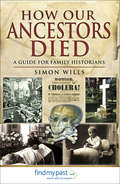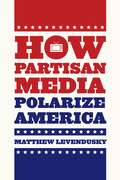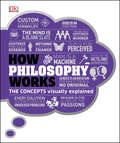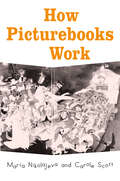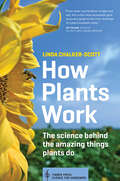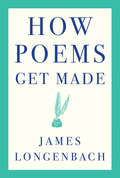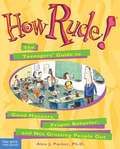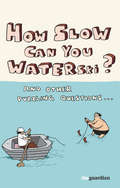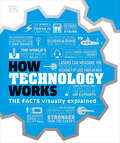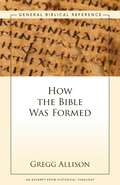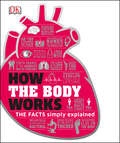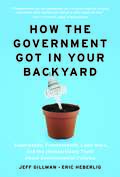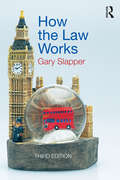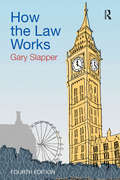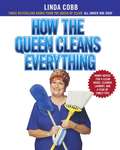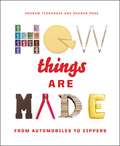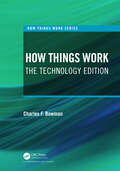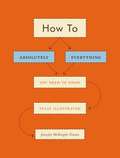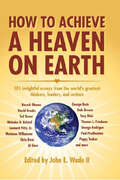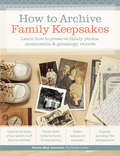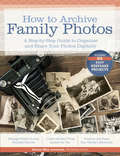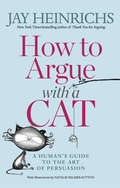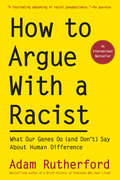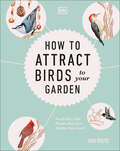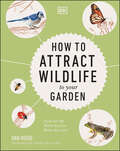- Table View
- List View
How Our Ancestors Died: A Guide for Family Historians
by Simon WillsWhat were the principal causes of death in the past? Could your ancestor have been affected? How was disease investigated and treated, and what did our ancestors think about the illnesses and the accidents that might befall them? Simon Willss fascinating survey of the diseases that had an impact on their lives seeks to answer these questions. His graphic, detailed account offers an unusual and informative view of the threats that our ancestors lived with and died of. He describes the common causes of death—cancer, cholera, dysentery, influenza, malaria, scurvy, smallpox, stroke, tuberculosis, typhus, yellow fever, venereal disease and the afflictions of old age. Alcoholism is included, as are childbirth and childhood infections, heart disease, mental illness and dementia. Accidents feature prominently road and rail accidents, accidents at work and death through addiction and abuse is covered as well as death through violence and war.Simon Willss work gives a vivid picture of the hazards our ancestors faced and their understanding of them. It also reveals how life and death have changed over the centuries, how medical science has advanced so that some once-mortal illnesses are now curable while others are just as deadly now as they were then. In addition to describing causes of death and setting them in the context of the times, his book shows readers how to find and interpret patient records, death certificates and other documents in order to gain an accurate impression of how their ancestors died.
How Partisan Media Polarize America (Chicago Studies In American Politics Ser.)
by Matthew LevenduskyForty years ago, viewers who wanted to watch the news could only choose from among the major broadcast networks, all of which presented the same news without any particular point of view. Today we have a much broader array of choices, including cable channels offering a partisan take. With partisan programs gaining in popularity, some argue that they are polarizing American politics, while others counter that only a tiny portion of the population watches such programs and that their viewers tend to already hold similar beliefs. In How Partisan Media Polarize America, Matthew Levendusky confirms—but also qualifies—both of these claims. Drawing on experiments and survey data, he shows that Americans who watch partisan programming do become more certain of their beliefs and less willing to weigh the merits of opposing views or to compromise. And while only a small segment of the American population watches partisan media programs, those who do tend to be more politically engaged, and their effects on national politics are therefore far-reaching. In a time when politics seem doomed to partisan discord, How Partisan Media Polarize America offers a much-needed clarification of the role partisan media might play.
How Philosophy Works: The Concepts Visually Explained (DK How Stuff Works)
by DKWhat is the meaning of life? Are we truly free? How can we make ethical choices? Discover the answers to life's greatest questions.Demystifying the key ideas of the world's greatest philosophers, and exploring all of the most important branches of philosophical thought in a uniquely visual way, this book is the perfect introduction to the history of philosophy. How Philosophy Works combines bold infographics and jargon-free text to demystify fundamental concepts about the nature of reality. Covering everything from ethics to epistemology and phenomenology, the book presents the ideas and theories of key philosophical traditions and philosophers - from Plato and Socrates to Nietzsche and Wittgenstein via Kant - in a novel, easy-to-understand way. Its infographics will help you to understand the elements of philosophy on a conceptual level and, by tackling life's "big questions", it will help you to look at the world in an entirely new way. With its unique graphic approach and clear, authoritative text, How Philosophy Works is the perfect introduction to philosophy, and the ideal companion to DK's The Philosophy Book in the "Big Ideas" series.
How Picturebooks Work (Children's Literature and Culture #14)
by Maria Nikolajeva Carole ScottHow Picturebooks Work is an innovative and engaging look at the interplay between text and image in picturebooks. The authors explore picturebooks as a specific medium or genre in literature and culture, one that prepares children for other media of communication, and they argue that picturebooks may be the most influential media of all in the socialization and representation of children. Spanning an international range of children's books, this book examine such favorites as Curious George and Frog and Toad Are Friends, along with the works of authors and illustrators including Maurice Sendak and Tove Jansson, among others. With 116 illustrations, How Picturebooks Work offers the student of children's literature a new methodology, new theories, and a new set of critical tools for examining the picturebook form.
How Plants Work: The Science Behind the Amazing Things Plants Do (Science For Gardeners Ser.)
by Linda Chalker-ScottThe more you know, the better you grow! Plants are capable of interesting and unexpected things. Why do container plants wilt when they’ve been regularly watered? Why did the hydrangea that thrived last year never bloom this year? Why do slugs wipe out the vegetable garden instead of eating the weeds? Plant physiology—the study of how living things function—can solve these and most other problems gardeners regularly encounter.In How Plants Work, horticulture expert and contributor to the popular blog The Garden Professors, Linda Chalker-Scott brings the stranger-than-fiction science of the plant world to vivid life. She uncovers the mysteries of how and why plants do the things they do, and arms the home gardener with fascinating knowledge that will change the way they garden.
How Poems Get Made
by James LongenbachA comprehensive guide to writing or reading poetry, by “one of our most lucid and important critics” (American Academy of Arts and Letters). Why does a great lyric poem ask to be reread, even after we know it by heart? In How Poems Get Made, acclaimed poet and critic James Longenbach answers this question by discussing a wide range of exemplary poems, from Shakespeare through Blake, Dickinson, and Moore, to a variety of poets making poems today. In each chapter of How Poems Get Made, Longenbach examines a specific aspect of the poetic medium—including Diction, Syntax, Rhythm, Echo, Figure, and Tone—and shows how a poet may manipulate these most basic elements to bring a poem to life.
How Rude! The Teenagers' Guide to Good Manners, Proper Behavior, and Not Grossing People Out
by Alex J. PackerHere's an etiquette book that teens will want to read--because it keeps them laughing, doesn't preach, and deals with issues that matter to them, as teens themselves reported in a nationwide survey. In How Rude!, author Alex J. Packer blends outrageous humor with sound advice as he guides readers through the mysterious world of manners from A ("Applause") to Z ("Zits"). He starts by explaining why etiquette is important--because people who know how to handle themselves in social situations come out on top, get what they want, feel good about themselves, and enjoy life to the fullest. Fourteen chapters describe the basics of polite behavior in all kinds of situations at home, in school, and in the world. Teens learn how to be a host with the most (and a guest with the best), what to do (and not do) when going online or waiting in line, how to deal with rude relatives, how to act at the mall and the concert hall, how to make introductions, who invented manners, and much more. Hundreds of "Dear Alex" questions and answers cover everything from dating to breaking up, thank-you notes to table manners, ethnic jokes to social cliques, skateboarding to celebrating. Survey results reveal what teens, parents, and teachers think about manners and why they're important. Full of practical tips for every occasion, How Rude! is a serious etiquette encyclopedia--and a hilarious read.
How Slow Can you Waterski?: and other puzzling questions ...
by Guardian News and Media LtdWhen the powers that be reduced the speed limit on Lake Windermere to 10 knots, waterskiers complained that their sport was now completely scuppered. So just how slow can you waterski before you start to sink beneath the waves?And, while we're about it, how long can you survive in a freezer? What are the chances of being struck by lightning in bed? And why is it so esay to raed wrods eevn wehn the lteetrs are mdduled up?Everyday life can pose some mind-boggling questions - but where do you find the answers? The Guardian's popular 'This Week' column has been looking into the science behind the news for three years, and How Slow Can You Waterski? draws together a selection of the most imaginative questions and the most surprising answers. If you've ever wondered what makes a planet a planet, why submarines keep bumping into things or even if it's safe to eat mud, How Slow Can You Waterski? will prove irresistible - and enlightening - reading.
How Technology Works: The Facts Visually Explained (DK How Stuff Works)
by DKHave you ever asked yourself how the inventions, gadgets, and devices that surround us actually work? Discover the hidden workings of everyday technology with this graphic guide.How Technology Works demystifies the machinery that keeps the modern world going, from simple objects such as zip fasteners and can openers to the latest, most sophisticated devices of the information age, including smartwatches, personal digital assistants, and driverless cars. It includes inventions that have changed the course of history, like the internal combustion engine, as well as technologies that might hold the key to our future survival, including solar cells and new kinds of farming to feed a growing population. Throughout the book, step-by-step explanations are supported by simple and original graphics that take devices apart and show you how they work. The opening chapter explains principles that underpin lots of devices, from basic mechanics to electricity to digital technology. From there, devices are grouped by application--such as the home, transportation, and computing--making them easy to find and placing similar devices side by side. How Technology Works is perfect for anyone who didn't have training in STEM subjects at school or is simply curious about how the modern world works.
How the Bible Was Formed: A Zondervan Digital Short
by Gregg AllisonDerived from Gregg Allison’s magisterial Historical Theology, this digital short provides a concise but thorough history of how both New Testament and Old Testament books were identified as Scripture and incorporated into the final canon. Attention is paid to differences between the Catholic and Protestant canons and to debates about the inclusion of apocryphal books. The equivalent of a series of lectures on Scripture’s formation, with extensive footnoting for further reading, this digital short provides a one-stop reference resource on a foundational matter of Christian doctrine and worship.
How the Body Works: The Facts Simply Explained (DK How Stuff Works)
by DKThis book takes you on the ultimate anatomical adventure around your own body, revealing how little you know about yourself in mind-blowing depth and detail.As part of the best-selling How Things Work series, this biological bonanza uses dynamic graphics, simple science, and accessible text to explore and explain this tricky subject as never before. If you&’ve ever wondered why your blood is red, how your reflexes work, what makes you feel dizzy, and where exactly are the butterflies in your tummy, then wonder no more. The answers to all these questions and many others are included in this essential visual guide. From body basics to advanced anatomy, How the Body Works introduces all your weird and wonderful parts and processes, alongside fascinating facts and easy explanations across hundreds of pages. Guaranteed to get your brain in gear, you&’ll get to know your physical self in terms of cells, skin, bones, and blood, as well as getting to grips with your emotional side in the psychology of emotions, memories, and dreams. Understand how our bodies keep us alive and thriving with How the Body Works.
How the Government Got in Your Backyard: Superweeds, Frankenfoods, Lawn Wars, and the (Nonpartisan) Truth About Environmental Policies
by Jeff Gillman Eric HeberligBiotechnology—the future or a genetic time bomb? Renewable fuels—the key to cleaner air or just corporate welfare? Greenhouse gasses—baking the earth to death or just a needless worry? Plant patents—improving gardens and farms or just profiteering? When you stop to think about it, the government has its hand in every important environmental issue. And with the left and the right raucously disagreeing about whether the government’s policies are for good or for evil, it’s impossible for a concerned citizen to know what to think.How the Government Got in Your Backyard distills the science, the politics, and the unbiased, nonpartisan truth behind hot-button environmental issues from pesticides to global warming. By clearly representing what the left says, what the right says, what the science is, and what the facts are, Gillman and Heberlig don’t set out to provide the answer—they light the path so concerned citizens can uncover their own true and informed opinion. In this season of political discontent, the unbiased truth about environmental policies—free of political agendas—is as refreshing as it is fascinating.How the Government Got in Your Backyard is not for Republicans or Democrats, liberals or conservatives. It’s for anyone who is ready to get to the bottom line.
How the Law Works
by Gary SlapperHow the Law Works is a refreshingly clear and reliable guide to the legal system in the UK. Offering interesting and comprehensive coverage, it makes sense of all the curious features of the law in day to day life and in current affairs. Explaining the law and legal jargon in plain English, it provides an accessible entry point to the different types of law and legal techniques, as well as the impact of European law and human rights law. In addition to explaining the role of judges, lawyers, juries and parliament, it clarifies the mechanisms behind criminal and civil law. How the Law Works is essential reading for anyone approaching law for the first time, or for anyone who is interested in an engaging introduction to the subject’s bigger picture.
How the Law Works
by Gary Slapper‘How the Law Works is a gem of a book, for law students and for everyone else. It is a must read for anyone interested in how society is shaped and controlled via law.’ Dr Steven Vaughan, solicitor, Senior Lecturer, Birmingham Law School ‘How the Law Works is a comprehensive, witty and easy-to-read guide to the law. I thoroughly recommend it to non-lawyers who want to improve their knowledge of the legal system and to potential students as an introduction to the law of England and Wales.’ HH Judge Lynn Tayton QC Reviews of the first edition: ‘A friendly, readable and surprisingly entertaining overview of what can be a daunting and arcane subject to the outsider.’ The Law Teacher ‘An easy-to-read, fascinating book . . . brimful with curios, anecdote and explanation.’ The Times How the Law Works is a refreshingly clear and reliable guide to today’s legal system. Offering interesting and comprehensive coverage, it makes sense of all the curious features of the law in day to day life and in current affairs. Explaining the law and legal jargon in plain English, it provides an accessible entry point to the different types of law and legal techniques, as well as today’s compensation culture and human rights law. In addition to explaining the role of judges, lawyers, juries and parliament, it clarifies the mechanisms behind criminal and civil law. How the Law Works is essential reading for anyone approaching law for the first time, or for anyone who is interested in an engaging introduction to the subject’s bigger picture.
How the Queen Cleans Everything: Handy Advice for a Clean House, Cleaner Laundry, a
by Linda CobbA how-to manual for housekeeping amateurs and pros alike, How the Queen Cleans Everything is a collection of fast and ingenious tips from #1 New York Times bestselling author -- and housekeeping's royal lady -- Linda Cobb, the Queen of Clean®. It's all here. All of the Queen's miraculous tips and surprising shortcuts on how to solve hundreds of cleaning challenges -- inside and out. Let the Queen show you how to turn your home into a sparkling palace in no time at all. Learn how to put an end to washday drudgery with her collection of nifty and natural solutions for stress-free washing and ironing -- and enjoy a year's worth of tips, tricks, and picks for a cleaner house and a more organized life. But most of all, discover how the Queen's no-nonsense "tips and hints" method of housekeeping means less time cleaning your home, and more time enjoying it! Let the Queen show you: the best way to clean your kitchen and bathroom the multitude of natural stain removers that are hiding in your cupboard how to garden the natural way what to do for spots, stains, scorch marks, and odors why you shouldn't clean your windows with newspaper how to clean your carpet and bare floors the right way to allergy-proof your home what those care labels really mean how to treat troublesome stains and delicate fabrics...and much more! At last...all the Queen of Clean's® famous advice for a clean house, cleaner laundry, and a year of timely tips -- right at your fingertips! Don't be home without it!
How Things Are Made: From Automobiles To Zippers
by Andrew TerranovaFor anyone curious about the nuts and bolts of human ingenuity, How Things Are Made is a fascinating exploration of the process behind the manufacture of everyday items.What are bulletproof vests made of? How do manufacturers get lipstick into the tube? How many layers are there in an iPhone screen? The answers to these questions and so much more fascinating information can be found in How Things Are Made, a behind-the-scenes look at the production everyday objects of all kinds, from guitars, sunscreen, and seismographs to running shoes, jet engines, and chocolate.Thoroughly revised and redesigned from the best-selling 1995 edition, How Things Are Made also contains three new entries by author Andrew Terranova. However, each page still contains informative step-by-step text along with detailed but easy-to-follow illustrations, diagrams, and sidebars to tell the stories behind the things we sometimes take for granted. For example, did you know that Edison didn't really invent the light bulb? Or that the first bar code was on a pack of Wrigley's Spearmint gum? Or that a maple seed inspired the design for the helicopter? Discover these fascinating anecdotes and much more in How Things Are Made.
How Things Work: The Technology Edition (How Things Work Series)
by Charles F. BowmanIt is beyond trite to say that technology is prevalent in our daily lives. However, many of us remain clueless as to how much of it works. Unfortunately, even for the curious among us, the Web is not always the best vehicle to acquire such knowledge: Information appears in fragments, some of it is incorrect or dated, and much of it serves as jargon-laden discussions intended for professionals. How Things Work: The Technology Edition will serve as a compendium of tutorials. Each section will focus on one technology or concept and provide the reader with a thorough understanding of the subject matter. After finishing the book, readers will understand the inner workings of the technologies they use every day and, more importantly, they will learn how they can make these tools work for them. In addition, the book will also inform readers about the darker side of modern technology: Security and privacy concerns, malware, and threats from the dark web.
How To
by Jennifer Mcknight-TrontzA delightful visual compendium and very nearly a substitute for good common sense, How To is the silly and seriously useful guide to mastering the miscellany of modern life. Packed in this chunky little volume are hundreds of instructional diagrams, culled from vintage how-to books, manuals, and product packaging, illustrating how to do anything you'll ever need to do--and many things you won't. With a bare minimum of text and just a few action arrows, these hard-working graphics are here to help. Learn how to use chopsticks, breakdance, tie a trash bag, diaper a baby, and parallel park. Discover the right way to do a cartwheel, use dental floss, hammer a nail, and slice bread. And if you've ever wondered whether you were walking correctly, wonder no more. With chapters to help you navigate the daily concerns of manners and grooming, home and family, health and safety, sports and exercise, and science and the world at large, this pocket-sized primer is the only book you'll ever really need. Honest.
How to Achieve a Heaven on Earth
by John E. II WadeWhether it's finding spiritual harmony, reducing carbon emissions, quelling hostilities among races, cutting taxes, or feeding the hungry, every single person has the capacity to change the world for the better. Longtime New Orleans writer, editor, and philanthropist John E. Wade II has asked some of our most prestigious thinkers, writers, artists, experts, and leaders to consider how to improve the world. The result--this ambitious volume--is as much a social mission as it is an inspirational anthology. Herein lie thoughtful and hopeful reflections on a rich variety of issues, ranging from racism, poverty, religious persecution, genocide, and environmental deterioration to individual consciousness, mental well-being, and community development.One hundred one contributions from such notable personalities as Al Gore, Tony Blair, Nicholas Kristof, Thomas L. Friedman, and George W. Bush explore variations on the themes of peace, security, freedom, democracy, prosperity, spiritual and racial harmony, ecology, health, and moral purpose and meaning. Focusing on the large problems of the world without losing sight of the little challenges people face every day, this collection of essays encourages readers to find meaning in their own lives and share it with others for the betterment of the world. Religious and secular, liberal and conservative, old and young, the luminaries who have contributed to this work offer their voices and thoughts to inspire movement toward creating a more harmonious world community.
How to Archive Family Keepsakes: Learn How to Preserve Family Photos, Memorabilia and Genealogy Records
by Denise May LevenickOrganize your family photos, heirlooms, and genealogy records In every family someone ends up with Mom's and Dad's "stuff"-a lifetime's worth of old family photos, papers, and memorabilia packed into boxes, trunks, and suitcases. This inheritance can be as much a burden as it is a blessing. How do you organize your loved one's estate in a way that honors your loved one, keeps the peace in your family and doesn't take over your home or life? How to Archive Family Keepsakes gives you step-by-step advice for how to organize, distribute and preserve family heirlooms. You'll learn how to: Organize the boxes of your parents' stuff that you inherited Decide which family heirlooms to keep Donate items to museums, societies, and charities Protect and pass on keepsakes Create a catalog of family heirlooms Organize genealogy files and paperwork Digitize family history records Organize computer files to improve your research Whether you have boxes filled with treasures or are helping a parent or relative downsize to a smaller home, this book will help you organize your family archive and preserve your family history for future generations.
How to Archive Family Photos: A Step-by-Step Guide to Organize and Share Your Photos Digitally
by Denise May LevenickOrganize and enjoy your family's memories! You've captured countless cherished family photos of babies' first steps, graduations, weddings, holidays, vacations, and priceless everyday moments on your smartphone or digital camera. Perhaps you've inherited a collection of heirloom family photographs, too. But now what? How to Archive Family Photos is a practical how-to guide for organizing your growing digital photo collection, digitizing and preserving heirloom family photos, and sharing your treasured photos. In this book, you'll find: Simple strategies to get your photos out of a smartphone or camera and into a safe storage space Easy methods to organize and back up your digital photos, including file-naming and tagging hints Achievable steps to digitize and preserve heirloom family photos Step-by-step workflows illustrating common photo organizing and digitizing scenarios Checklists for setting up your own photo organization system 25 photo projects to preserve, share, and enjoy your family photos Whether you have boxes full of tintypes and black-and-white photographs, an ever-growing collection of digital photos, or a combination of the two, this book will help you rescue your images from the depths of hard drives and memory cards (or from the backs of closets) so that you can organize and preserve your family photo collection for future generations.
How to Argue with a Cat: A Human's Guide to the Art of Persuasion
by Jay Heinrichs Natalie Palmer-SuttonLearn how to persuade cats—the world’s most skeptical and cautious negotiators—with this primer on rhetoric and argument from the New York Times bestselling author of Thank You for Arguing!Cats are skilled manipulators who can talk you into just about anything without a single word (or maybe a meow or two). They can get you to drop whatever you’re doing and play with them. They can make you serve their dinner way ahead of schedule. They can get you to sit down in an instant to provide a lap. On the other hand, try getting a cat to do what you want....While it’s hard, persuading a cat is possible. And after that, persuading humans becomes a breeze, and that is what you will learn in this book. How to Argue with a Cat will teach you how to:· Hold an intelligent conversation—one of the few things easier to do with a cat than a human.· Argue logically, even if your opponent is furry and irrational.· Hack up a fallacy (the hairball of logic).· Make your body do the talking (cats are very good at this).· Master decorum: the art of fitting in with cats, venture capitalists, or humans.· Learn the wisdom of predator timing to pounce at the right moment.· Get someone to do something or stop doing it.· Earn any creature’s respect and loyalty.
How to Argue With a Racist (and Don't) Say About Human Difference: What Our Genes Do (and Don't) Say About Human Difference
by Adam RutherfordThis authoritative debunking of racist claims that masquerade as “genetics” is a timely weapon against the misuse of science to justify bigotry—now in paperback Race is not a biological reality. Racism thrives on our not knowing this. In fact, racist pseudoscience has become so commonplace that it can be hard to spot. But its toxic effects on society are plain to see: rising nationalism, simmering hatred, lost lives, and divisive discourse. Since cutting-edge genetics are difficult to grasp—and all too easy to distort—even well-intentioned people repeat stereotypes based on “science.” But the real science tells a different story: The more researchers learn about who we are and where we come from, the clearer it becomes that our racial divides have nothing to do with observable genetic differences. The bestselling author of A Brief History of Everyone Who Ever Lived explains in this explosive, essential guide to the DNA we all share.
How to Attract Birds to Your Garden: Foods they like, plants they love, shelter they need
by Dan RouseHelp your local wild birds by providing them with a safe garden environmentMake a difference to your local birdlife. Help reverse the decline in bird numbers by creating a haven in which they will thrive. It's a win-win. Provide the best shelter, feeding, and nesting opportunities for them and then you can reap the rewards as they sing and entertain.No need to be an expert gardener already, or to break the bank - many of the most beneficial features can be installed easily and cheaply, and many you can build yourself or upcycle to be eco-friendly.
How to Attract Wildlife to Your Garden: Foods They Like, Plants They Love, Shelter They Need
by Dan RouseTransform your garden into a haven for all kinds of wildlife.In a world with too much concrete and not enough greenery, every wildlife-friendly garden can make a huge difference. But what if we told you that you can make a difference to your local wildlife from the comfort of your own home? You can help to reverse the decline in bird numbers and much more by creating a haven in which they will thrive! Let author, presenter, and wildlife conservationist Dan Rouse show you how you can make your outdoor space more welcoming for a wide variety of visitors, from planting pollinator-friendly perennials to digging a pond. Learn the best ways to provide shelter, food, and water, discover the best planting choices and how they can help, then sit back and watch as your garden becomes a much-needed refuge for a huge range of species.Dive straight in to discover:- A beautiful mixture of full-color illustrations and photos of different species.- Practical advice on supporting local wildlife, with ideas suitable for all budgets and abilities.- Suggestions for beneficial plant choices for a range of climate and soil types.- Step-by-step projects tailored to both attracting wildlife and to observe the wildlife that visits the garden.- Ideas for small gardens and outdoor spaces, as well as practical considerations such as pets and children sharing a garden with wildlife.- Final chapter on &‘Observing garden wildlife&’ that showcases low- and high-tech methods of watching for wildlife, and how to connect with the wider wildlife community. The book features plenty of projects to help you attract and observe your new garden visitors, as well as galleries of common species you can expect to see. Following in the footsteps of its sister title How to Attract Birds to Your Garden, everything in the book is clear, accessible, and engaging, with plenty of budget-friendly tips and ideas suitable for gardeners and non-gardeners alike. Packed with equal parts expertise and passion, How to Attract Wildlife to Your Garden proves that, by giving nature opportunities to thrive, we all benefit: ourselves, our planet, and the wildlife that may call our garden home.
